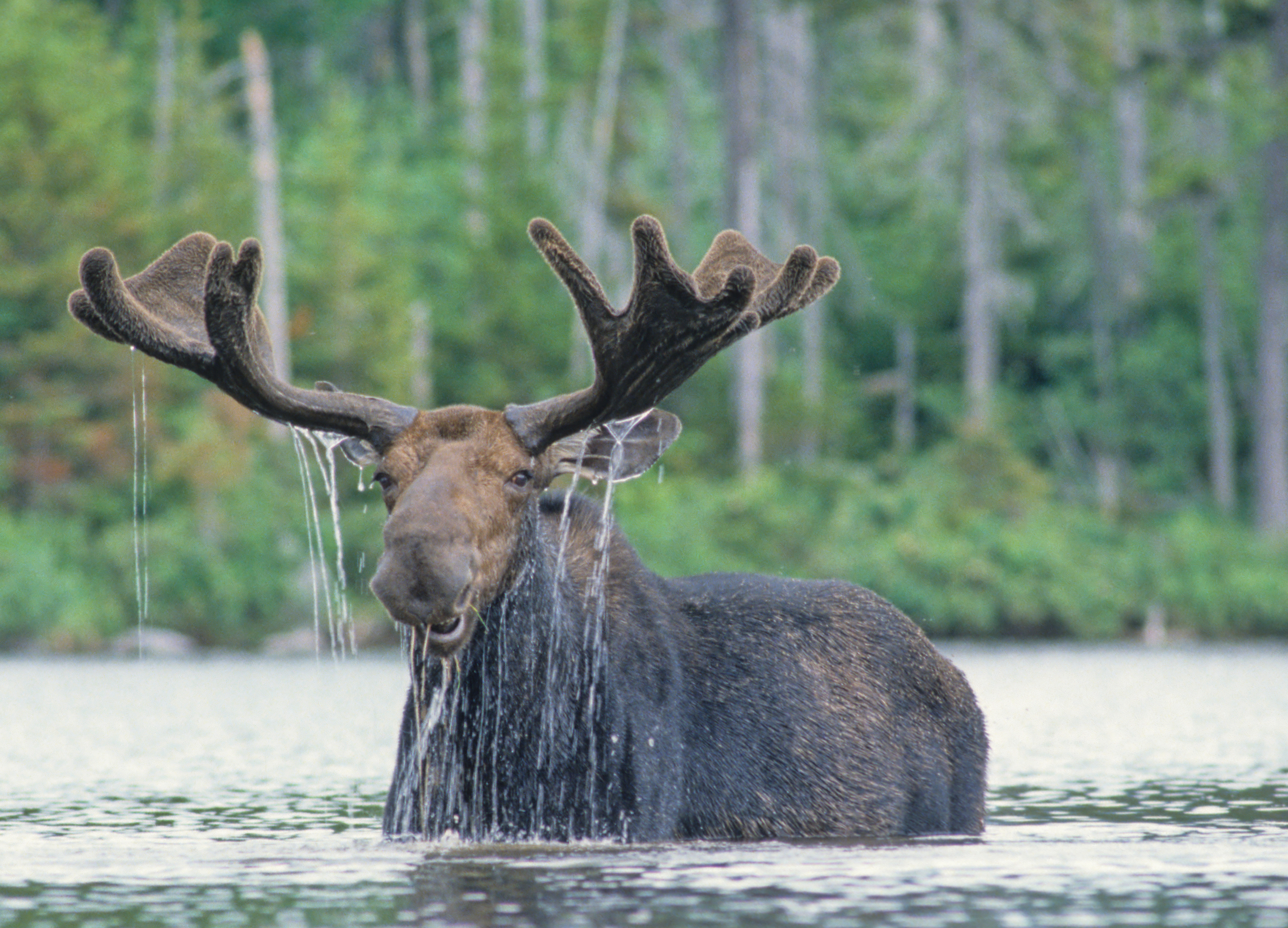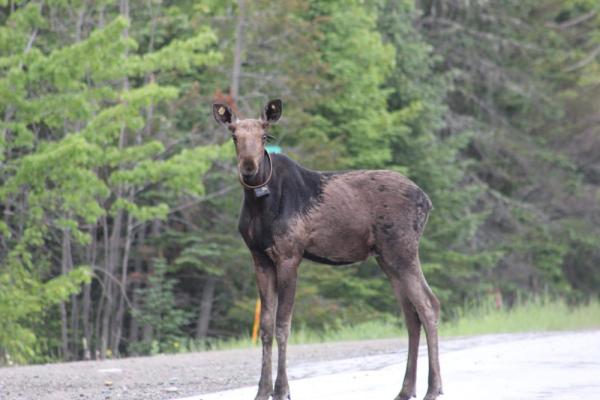KID REPORTERS’ NOTEBOOK
Moose in New England Face Threat


Maine is home to the largest population of moose in the continental United States.
Moose are an iconic symbol of wildlife in New England. An estimated 70,000 moose are spread across Maine, New Hampshire, and Vermont, with the most in Maine. Moose help shape our forests through their feeding patterns. They also support the habitat of other animals.
In recent decades, however, moose have been disappearing at an alarming rate. They are being attacked by winter ticks. The tiny parasites attach themselves to moose in the fall and feed on their blood during the winter. Winter ticks, also known as moose ticks, are no larger than a pencil tip. They have a one-year life cycle and feed exclusively on moose.
I spoke with Lee Kantar about this threat. Kantar is a moose biologist at the Maine Department of Inland Fisheries and Wildlife. He studies local moose populations and the threats to their survival.
“Fall 2023 had the most ticks yet,” Kantar said. “This resulted in the loss of 87% of calves before their first birthday.” Calves are baby moose.
When asked why ticks are causing so much harm, Kantar said: “Climate change, especially in the last 20- 25 years, has made our winters in Maine shorter. When winters are shorter, the ticks have a better chance of surviving and multiplying.”

A moose’s hair is parted so that ticks can be counted.
EXPORING WAYS TO PROTECT MOOSE
What is being done to protect the moose population in New England? One strategy has been to attach a tick collar to the animals. But the method is costly, and the moose population is too large.
“Your dog is with you constantly, and you could give it medicine every day,” Kantar explained. “But a moose is a wild animal. They range far and wide. Putting a pesticide on them is just not practical.”
Some scientists have suggested releasing animals that eat ticks, including guinea hens and opposum, into the wild. But these animals can’t survive in the wilderness in winter.
What about spraying pesticide in the woods? The problem, Kantar said, “is anything that kills ticks will kill other insects, which are important to the environment.”
Other solutions are being explored. These include developing a fungi that can kill ticks, as well as selective control of the moose population.

A moose wears a GPS (global positioning system) collar, which tracks its movements.
